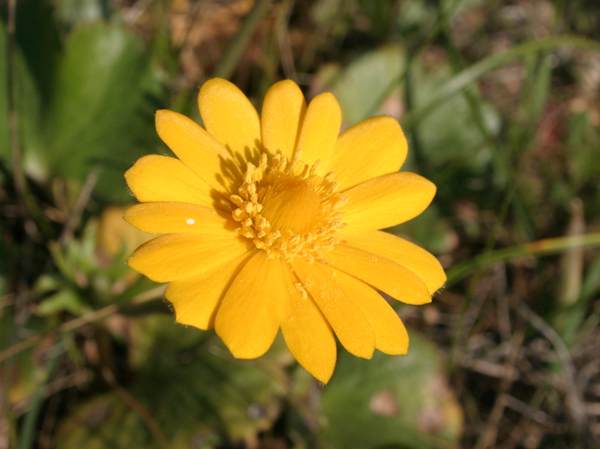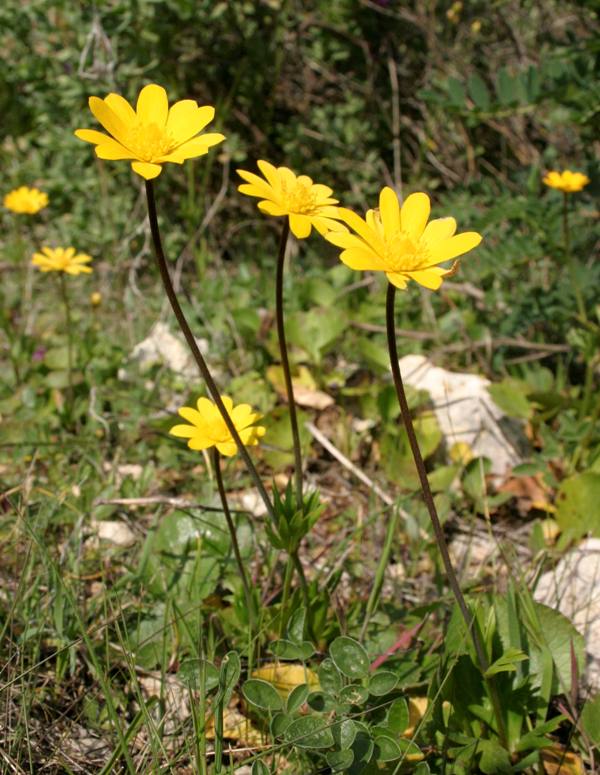Anemone palmata - Palmate Anemone or Yellow Anemone
Phylum: Magnoliophyta - Class: Equisetopsida - Order: Ranunculales - Family: Ranunculaceae

Bright yellow daisy-like flowers seem to be a special feature of the springtime floral explosion in the Algarve region of Portugal, but Anemone palmata is not a daisy (of the family Asteraceae) but a member of the Buttercup family, Ranunculaceae.

Distribution
Anemone palmata has a restricted range, being fairly common across most of Spain and Portugal and in the southern part of France. The Palmate Anemone is also recorded from Sardinia and Sicily.
Habitat and Blooming Times
Anemone palmata is more selective about its habitat than most other members of its genus, preferring moister ground. From March to May Anemone palmata can be found in damp pockets in rocky ground, on grassy slopes and in open positions in woodland, notably with various kinds of oak trees including Cork Oaks; we have also found it under pines on woodland edges in the Algarve region of southern Portugal. (The picture above shows Anemone palmata blooming in dense pine needles in open woodland in the Algarve during April.)
A good distintuishing feature is the rounded, lobed leaves which are so unlike those of many of the daisies that appear in the same region and at the same time of year.
Etymology
Anemone comes from Greek and literally means 'daughter of the wind', although many other explanations have been put forward as the intended meaning of the name Anemone. The specific epithet palmata means like the palm of a hand - a reference to the form of the leaves of this plant.
Please Help Us: If you have found this information interesting and useful, please consider helping to keep First Nature online by making a small donation towards the web hosting and internet costs.
Any donations over and above the essential running costs will help support the conservation work of Plantlife, the Rivers Trust and charitable botanic gardens - as do author royalties and publisher proceeds from books by Pat and Sue.

